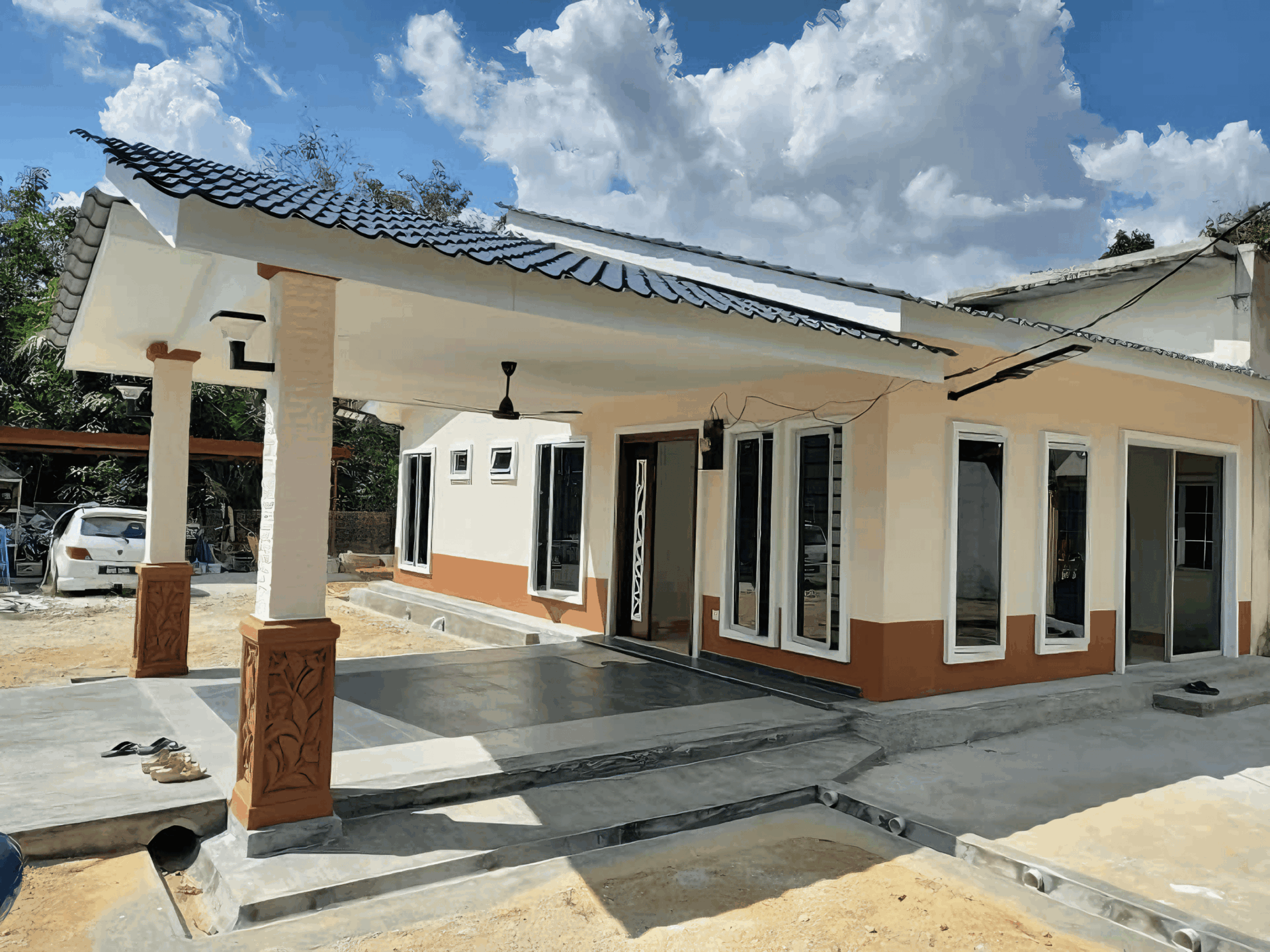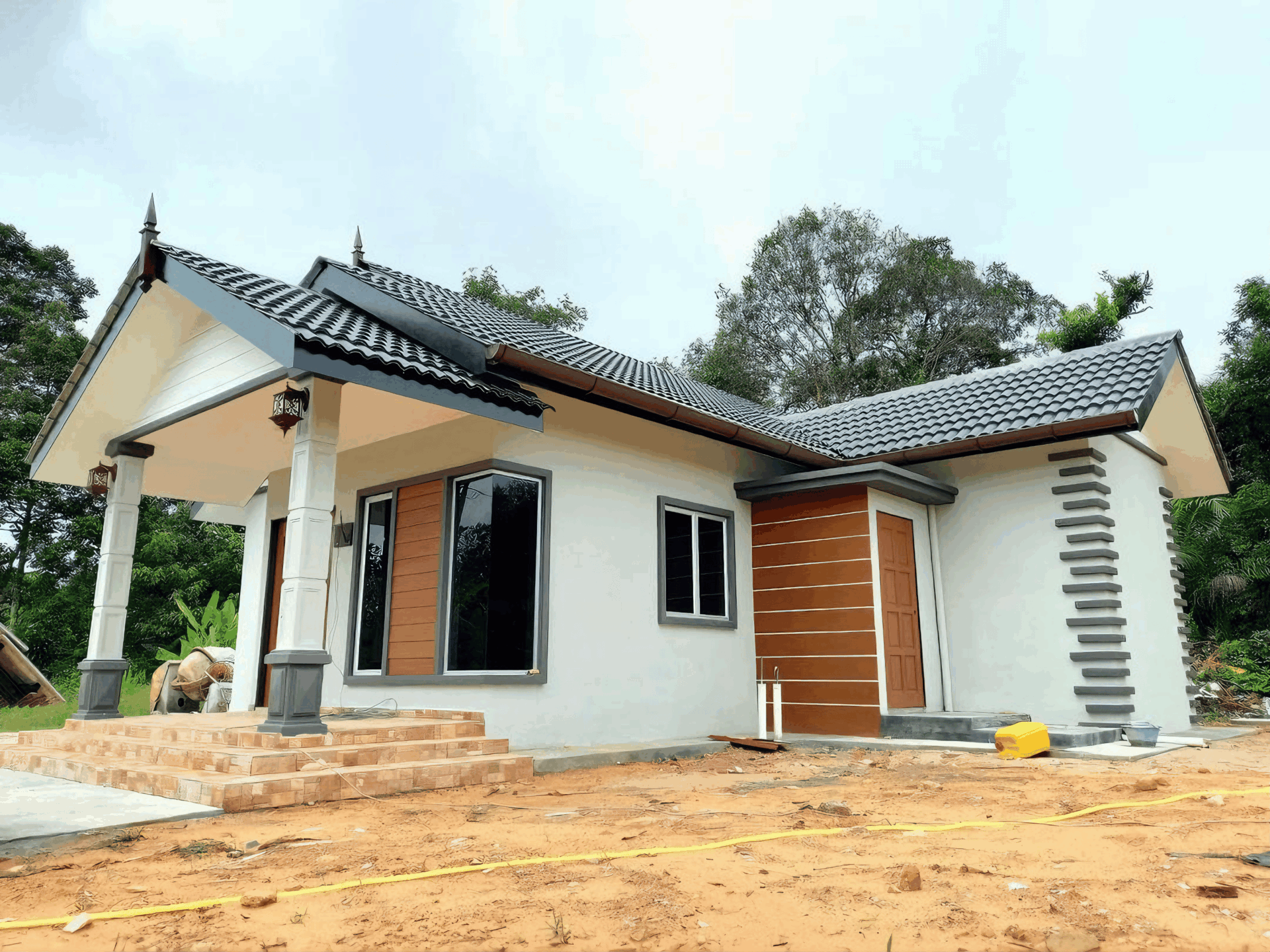When it comes to construction projects, most of the spotlight shines on grand designs, innovative materials, and those eye-catching architectural wonders that transform our skylines. But let’s take a moment to appreciate the unsung heroes that quietly keep everything on track: payment schedules. Yup, you heard it right! While many folks may not give them a second thought, these financial blueprints are crucial in ensuring that projects flow smoothly from start to finish. Whether it’s a cozy home in Kuala Lumpur or a bustling commercial space in Penang, having a solid payment schedule can make all the difference. So, let’s dive into why these often-overlooked plans deserve some serious recognition and how they pave the way for successful construction outcomes in Malaysia. Grab a cup of kopi and let’s get started!
The Foundation of Financial Clarity in Construction Projects
In the whirlwind of construction projects, keeping a clear financial roadmap is often the key to success. Payment schedules serve as that essential guide, providing everyone involved with a transparent view of cash flow. With these schedules in place, contractors, clients, and subcontractors can avoid the common pitfalls of miscommunication and financial uncertainty. By establishing clear expectations for when payments are due, all parties can focus on what truly matters: delivering a great project.
Imagine a well-oiled machine where every cog knows its role; this is what a defined payment schedule facilitates. It not only streamlines the flow of funds but also helps in budgeting effectively. Think about the added benefits:
- Prevents Delays: With clear payment timelines, projects can progress without unnecessary halts.
- Enhances Trust: Transparent payment practices foster trust between clients and contractors.
- Improves Cash Flow Management: Accurate schedules help businesses plan their expenses better.
When these agreed-upon terms are documented properly, they also protect everyone legally. A well-defined payment schedule acts like a safety net, ensuring that all contractual obligations are met. This not only mitigates disputes but also sets a professional tone for the project. Below is a simple overview demonstrating how different stakeholders benefit from payment schedules:
| Stakeholder | Benefits of Payment Schedules |
|---|---|
| Contractors | Assured cash inflow and better project planning |
| Clients | Clear timelines for payments and expenditure visibility |
| Subcontractors | Reliable payment intervals that aid in securing their own contracts |

Navigating Cash Flow Challenges with Effective Payment Schedules
In the bustling world of construction, maintaining a steady cash flow is like keeping the engine running smoothly in a high-performance vehicle. When payment schedules are set up correctly, they serve as a lifeline, ensuring that funds are allocated appropriately and on time. With the right payment terms, contractors can avoid the dreaded cash flow crunch, allowing them to focus more on execution rather than financial strain. This not only supports operational efficiency but also fosters a healthier relationship with subcontractors and suppliers, which is critical in the Malaysian marketplace.
Implementing effective payment schedules helps in several ways:
- Improved budget management: Knowing when payments are due enables better financial planning and resource allocation.
- Reduced disputes: Clear expectations prevent misunderstandings, making it easier to resolve conflicts if they arise.
- Timely project completion: Regular cash inflow means that all parties can stay on track, ensuring that projects don’t stall due to financial hiccups.
A practical example of structured payment schedules can be seen in the table below, which outlines a simple framework that aligns payment milestones with project phases:
| Project Phase | Payment Schedule (%) |
|---|---|
| Design Completion | 20% |
| Foundation Work | 30% |
| Structure Up | 30% |
| Final Inspection | 20% |
By adopting such clear and progressive payment structures, stakeholders can strategically distribute cash flow burdens across the project timeline. Embracing these schedules is about more than just managing money; it’s about cultivating trust and reliability. In an industry where unexpected challenges are part of the game, a meticulous payment schedule isn’t just helpful—it’s essential for construction success in Malaysia.

Enhancing Collaboration Between Contractors and Clients
Effective collaboration between contractors and clients is essential for the success of any construction project, and structured payment schedules can be the key to unlocking this synergy. By clearly outlining expectations and timelines, both parties can avoid misunderstandings and build a strong working relationship. When clients see that contractors are committed to completing work on time, and contractors understand that timely payments are guaranteed, trust grows. This trust fosters open communication, where both sides feel comfortable sharing concerns and suggestions.
Establishing clear payment milestones encourages accountability and enables both parties to track project progress. Without a structured approach, clients might feel anxious about their investment, while contractors may face cash flow issues, compromising the quality and speed of work. Consider the following benefits of a transparent payment structure:
- Increased Transparency: Clients know exactly what they are paying for at each stage.
- Predictable Cash Flow: Contractors can manage their resources more efficiently.
- Shared Goals: Both parties work towards completing specific project milestones.
The connection between payment schedules and collaboration can be illustrated through a simple table that showcases the different phases of a project along with corresponding payment terms:
| Project Phase | Payment Percentage | Completion Criteria |
|---|---|---|
| Design & Planning | 20% | Completion of blueprints and approvals |
| Foundation Work | 30% | Foundation laid and inspected |
| Framework & Structure | 30% | Walls and roof completed |
| Final Touches | 20% | Final inspection and approval |
When both contractors and clients adhere to this structured approach, they are not just following a system; they are nurturing a partnership that values cooperation, expectations, and results. The rhythm of payment schedules allows everyone involved to stay on the same page, reducing friction and promoting a smoother workflow that ultimately leads to successful project completion. By recognizing the importance of payment schedules, both sides can significantly enhance collaboration and create an environment where great results can thrive.

The Role of Payment Milestones in Project Management Success
Payment milestones are like the secret sauce that can transform a chaotic construction project into a smooth operation. When properly aligned with project phases, they ensure that work continues without financial hiccups. Setting up predetermined milestones creates a mutual understanding between contractors and clients and fosters a spirit of responsibility and accountability. Everyone knows what’s expected and when, reducing the risk of misunderstandings and disputes.
Moreover, these milestones can act as performance indicators, allowing project managers to take a closer look and assess whether the project is on track. For instance, once a milestone is reached — such as the completion of the foundation — a scheduled payment can be released. This not only incentivizes workers but also helps in budgeting, as you can predict cash flow more accurately. Think of it this way: regular checkpoints mean fewer surprises and more opportunities for everyone to stay on the same page.
Incorporating a structured payment plan can also enhance the working relationship between contractors and clients. When both parties are clear about when payments will be made, trust grows. Both sides are more likely to cooperate and communicate effectively, leading to fewer project delays and a stronger overall outcome. Plus, clients can have peace of mind knowing that funds are being released as progress is made, making payment milestones a win-win situation.

Minimizing Disputes through Transparent Payment Agreements
In the dynamic world of construction, clarity is essential. Transparent payment agreements lay the groundwork for trust and collaboration among all parties involved. When everyone knows what to expect, misunderstandings are far less likely to arise. Keeping the terms of payment visible ensures that contractors, subcontractors, and clients are all on the same page, eliminating nagging uncertainties that can lead to disputes.
Establishing a clear payment schedule promotes accountability and maintains the project’s momentum. By outlining payment milestones connected to specific deliverables, stakeholders are better able to gauge progress. This fosters a proactive approach where potential issues can be addressed early on instead of letting them simmer and create larger problems later. Here are some key elements to include in a payment agreement:
- Clear Milestones: Define distinct phases linked to payment triggers.
- Timelines: Set specific dates for when payments are due.
- Conditions: Outline what must be completed for payment to be released.
The impact of transparent payment agreements also extends to improved relationships between contractors and clients. A well-structured payment schedule allows everyone involved to manage budgets better, enabling timely payment flows. This builds a reputation of reliability and professionalism that can only lead to future collaborations. Below is a simple table outlining the benefits of transparency in payment agreements:
| Benefit | Description |
|---|---|
| Reduces Conflicts | Clear expectations lessen the chances of disputes. |
| Encourages Communication | Regular updates foster open dialogue among stakeholders. |
| Promotes Financial Management | Helps all parties plan expenditures effectively. |

Forecasting Costs and Contingencies for Smooth Operations
When embarking on a construction project, it’s vital to have a clear understanding of costs and potential contingencies. Payment schedules play a crucial role in forecasting these elements, allowing project managers to anticipate necessary funds and allocate resources more effectively. By outlining the stages of payment upfront, stakeholders can gain insight into where the project stands financially at any given point, minimizing the risk of cash flow issues that could derail operations.
In addition to providing financial clarity, payment schedules also facilitate better communication among all parties involved. With an agreed-upon plan, everybody—from contractors to suppliers—knows when to expect payments and can manage their cash flow accordingly. This proactive approach fosters trust and collaboration, helping to avoid misunderstandings that may lead to disputes or delays. Here’s how effective communication can be achieved:
- Regular Updates: Keeping all stakeholders informed about project progress can prevent surprises.
- Clear Expectations: Defining terms helps in aligning everyone’s focus towards the common goal.
- Adaptability: Being open to revising schedules as required can enhance project flexibility.
Furthermore, considering contingencies is essential for smooth operations. Unexpected events can and do occur on construction sites, so establishing a reserve fund based on an estimated percentage of the total project cost can provide a safety net. A well-documented payment schedule should thus not only reflect regular costs but also incorporate these buffer funds. Below is a simple way to visualize how contingencies can be accounted for:
| Cost Item | Estimated Cost (RM) | Contingency (10%) |
|---|---|---|
| Material Supplies | 30,000 | 3,000 |
| Labor Costs | 50,000 | 5,000 |
| Equipment Rentals | 20,000 | 2,000 |
| Total | 100,000 | 10,000 |

Building Trust and Accountability with Regular Payments
When it comes to construction projects, maintaining a solid relationship between all parties is vital. One effective way to foster that relationship is through regular, structured payment schedules. Regular payments cultivate a sense of security among contractors and subcontractors, ensuring that all team members receive their dues on time. This assurance not only reduces stress but also strengthens the collaboration between different stakeholders, as everyone knows what to expect financially. By adhering to a pre-established schedule, you’re not just keeping the cash flow steady; you’re also demonstrating a commitment to fairness and ethical business practices.
Moreover, having predetermined payment milestones helps in managing expectations and accountability. Each payment can be tied to specific project milestones or deliverables, creating a transparent framework for assessing progress. This method allows all parties involved to communicate feasibly about project timelines, accomplishments, and any obstacles that arise. Just consider some key benefits:
- Clear Expectations: Everyone knows what needs to be achieved to unlock the next payment.
- Reduced Conflicts: Regular payments diminish the chances of disputes over money.
- Incentivized Performance: Contractors are more likely to meet their deadlines if remuneration is tied to specific completions.
Additionally, these consistent financial interactions can lead to positive word-of-mouth and easier access to future partnerships. When construction teams feel valued and respected, it’s more likely they will showcase their work and affirm their relationships. To illustrate the effectiveness of this approach, consider the table below that outlines a typical payment schedule:
| Milestone | Payment (%) | Due Date |
|---|---|---|
| Project Kickoff | 10% | Upon Signing Contract |
| Foundation Complete | 30% | End of Month 2 |
| Framing Complete | 20% | End of Month 4 |
| Final Inspection | 30% | End of Month 6 |
| Project Completion | 10% | End of Month 7 |

Best Practices for Creating and Implementing Payment Schedules
Start by establishing a clear understanding of the payment terms before the project kicks off. Both parties should engage in open discussions to set expectations around timelines and amounts. This will help to avoid any confusion later down the road. Aim for a simple and transparent structure that everyone agrees on. Whether you choose milestone payments, hourly rates, or a fixed fee, make sure it’s easy to understand and follow.
Next, consider incorporating a project timeline into your payment schedule. By linking payments to specific project phases or deliverables, you create a greater sense of accountability and motivation for all involved. Use a visual representation, like a Gantt chart or a simple timeline table, to outline the payment structure. This way, everyone knows what to expect and when, making it simpler to track progress against the budget.
keep communication lines open throughout the project. Regular check-ins and progress updates are crucial to maintain trust and clarity. If any hiccups arise, address them promptly. Having a flexible approach in place can help adjust the payment schedule as needed, which will also reflect your adaptability and commitment to the project’s success. Below is a simple example of how a payment schedule linked to project milestones could look:
| Milestone | Completion Percentage | Payment Amount |
|---|---|---|
| Project Kick-off | 10% | RM 10,000 |
| Foundation Completion | 30% | RM 30,000 |
| Structure Completion | 50% | RM 50,000 |
| Final Inspection | 100% | RM 10,000 |
To Wrap It Up
As we wrap up our deep dive into the world of payment schedules, it’s clear that these often-overlooked elements are truly the backbone of successful construction projects. They might not grab the headlines, but payment schedules work quietly behind the scenes, ensuring that everything runs like a well-oiled machine. From keeping projects on track to maintaining healthy relationships between contractors and clients, their role is simply invaluable.
In Malaysia’s vibrant construction landscape, where anticipation often meets complexity, having a solid payment schedule can mean the difference between chaos and seamless progress. So, the next time you find yourself embarking on a construction journey—whether it’s a cozy bungalow or a towering high-rise—remember to give a nod to the payment schedule. It’s not just about the cash flow; it’s about building trust and transparency.
Stay savvy, keep those schedules tight, and watch your construction dreams unfold without a hitch. Happy building, Malaysia!







